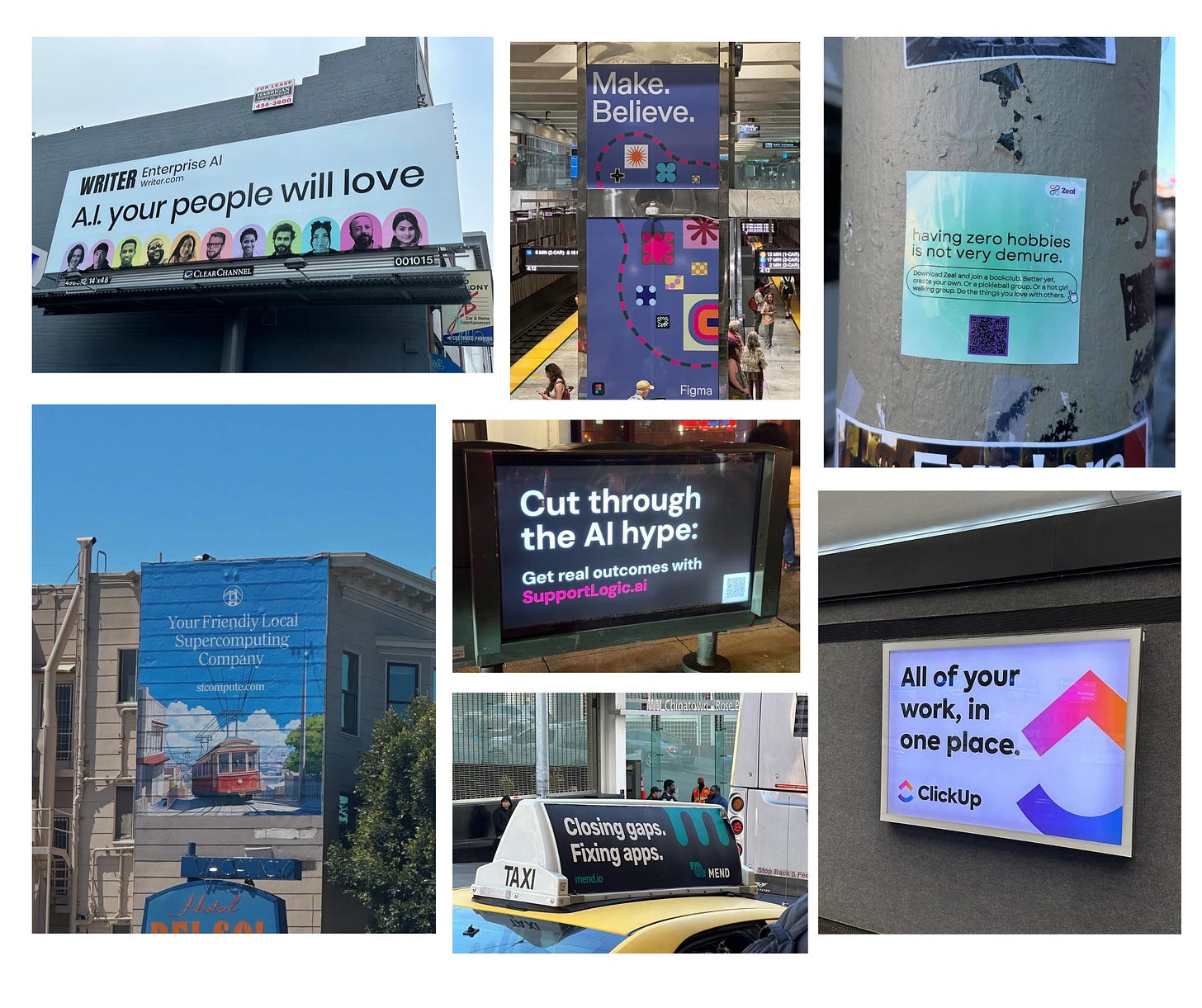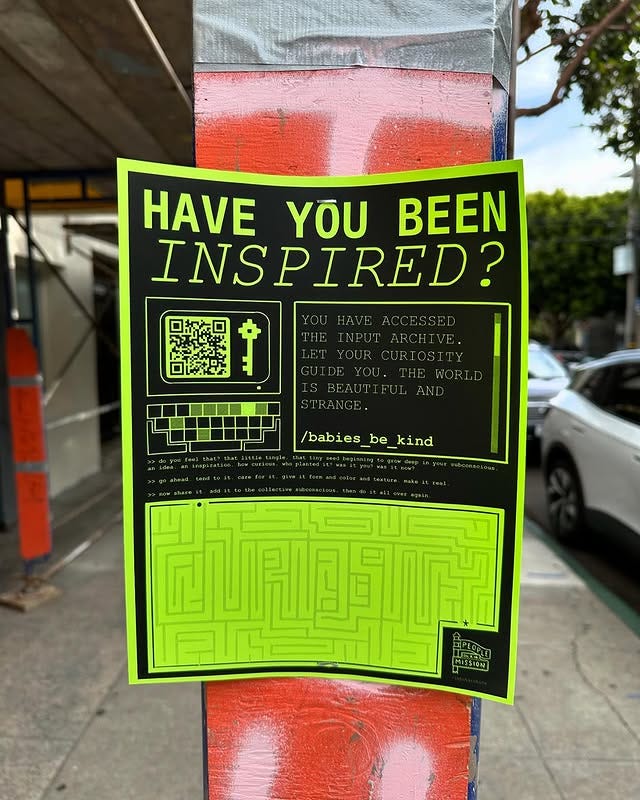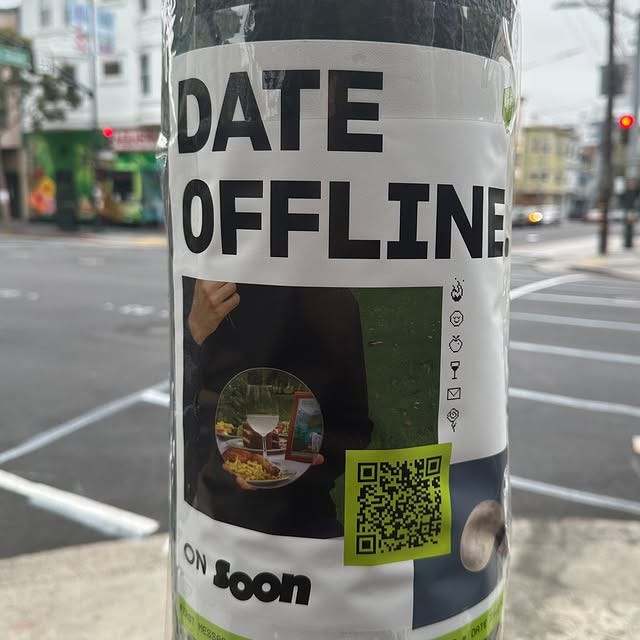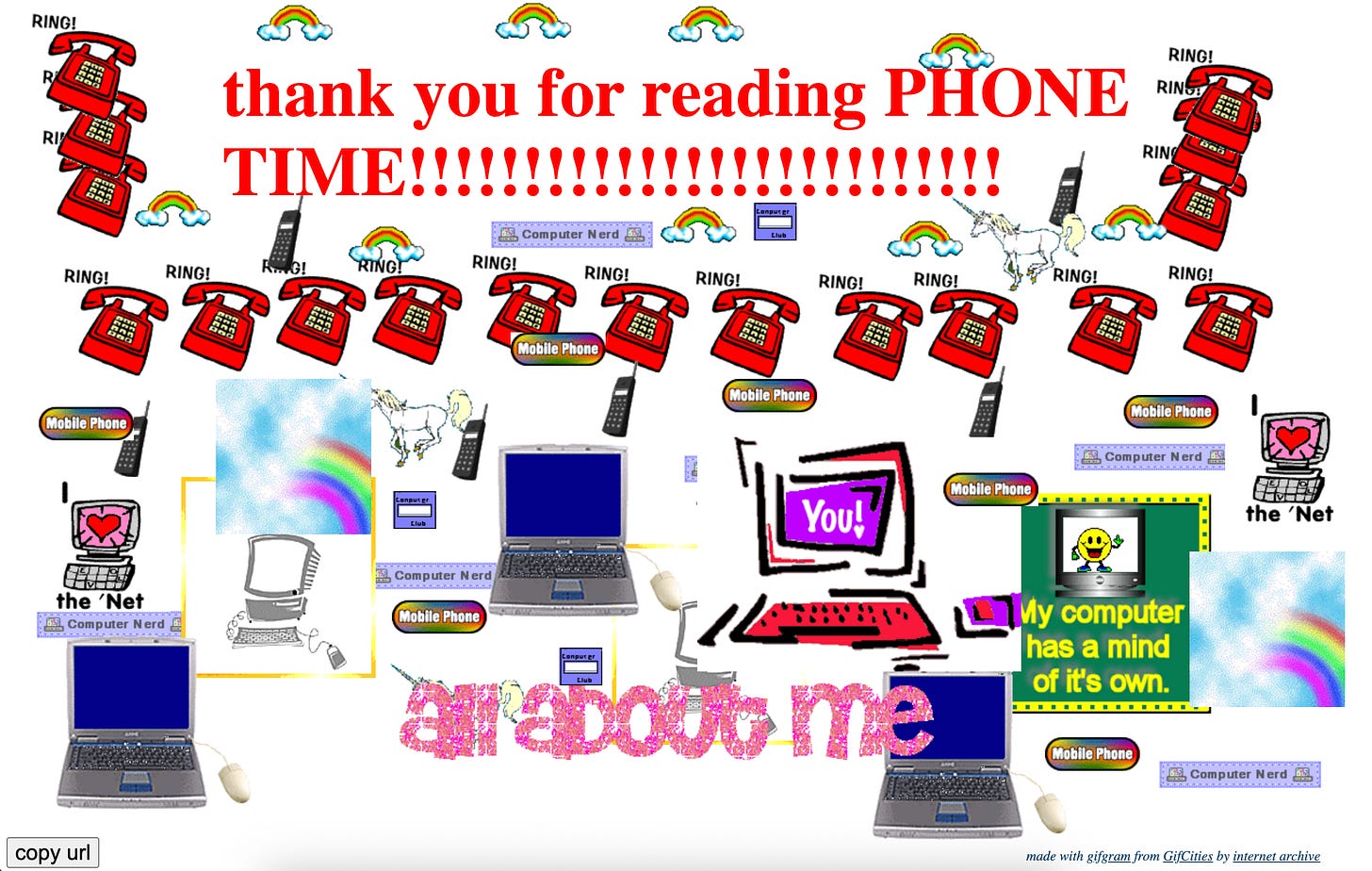'San Francisco, one billboard at a time'
Bill Dybas has been chronicling tech hype cycles through ads.
Today’s issue of PHONE TIME includes: some fun internet projects by way of software engineer Bill Dybas. Elsewhere online: TechCrunch turns 20, I tried a new retro camera app, and the Internet Archive announces an updated version of GifCities.

“Orbs in SF.” “Having zero hobbies is not very demure.” “Date offline.” “Need GPU?” These are just a few of the billboards you might spot while in San Francisco.
Software engineer Bill Dybas has been chronicling San Francisco’s tech culture by photographing billboards, advertisements, and flyers, which he shares on “Ads of San Francisco” via Instagram and X. On X, he also reposts others’ spottings of weird, uncanny, or otherwise interesting ads.
Each post is simple: a photo of an advertisement, paired with a caption matching the ad copy. Together, the posts tell the story of San Francisco’s evolving tech scene. One of the earliest posts, from July 2023, advertises “a retail store run by a DAO.” Another one, from August 2023, features the Worldcoin orb.
From late 2023 to now, one theme has clearly emerged. Here’s a taste of recent ad copy: "AI that puts humans first.” “New Jersey: The Next Home of AI.” “Can your AI speak 135 languages?” “The World’s Most Advanced AI-Powered Cybersecurity Platform.” “We teach AGI to think, reason, and code—so you don’t have to.”
Dybas told me he doesn’t see crypto ads anymore. He finds the ad landscape to be a reflection of what venture capitalists are funding, larger tech trends, and the overall macroeconomic climate.
“There's also a steady stream for startup banking, corporate cards, HR software, and developer tools—products technology companies need in any economic climate,” he said.
While scrolling through Ads of San Francisco, I noticed a few outliers among the AI-focused ads. Some encourage in-person meetups or matchmaking services—usually printed on old-school flyers pasted to street posts, rather than splashed across sweeping billboards.
Both the Instagram and X accounts remain small in terms of follower count, and Dybas said most of the reactions have been from friends thus far. Though he’s no longer based in San Francisco, he still photographs ads when he returns to visit.
I also spoke with Dybas about another project of his, called Personal Network, which he describes as an “ode to early web rings pre-social media.” Click the link, and each time you’ll be directed to a different personal website—from different technologists, artists, programmers, engineers, and other makers.
When it comes to curating the sites, “the weirder, the better,” Dybas told me. He sees personal websites as a way for people to show taste and personality, just as they might in person. Websites can also enable more creativity and effort than cookie-cutter social media profiles, he said.
Some of the sites featured on Personal Network are minimalist, while others are colorful and interactive. Some are straightforward, others are winding. A few include notes about being works in progress. A personal website can also be a canvas to flex programming or design skills, Dybas noted.
His criteria aren’t super strict, but he avoids including websites that are “strictly used as blogs, link-in-bio sites, or website builder templates.” As for discovering new personal websites, he turns to Twitter as well as “in-person events like conferences, demo nights, or artist talks.”
Many of Dybas’ projects have an undercurrent of discovery and curation.
“I think I just love finding cool things and sharing them with more people,” he said.
Elsewhere online
“From Farrah Fawcett’s Shampoo to the First Beautyblender, Here’s a Look at the 2,200-Plus Beauty Products in the Smithsonian”—Liz Ritter, NewBeauty
“According to a spokesperson for the Smithsonian, the National Museum of American History’s collection has an impressive 2,200-plus collection of hygiene, beauty and pharmaceutical products.”
I’ve been looking at the digitized fragrance collection.
It’s the 20th birthday of TechCrunch. “TechCrunch is a weblog dedicated to obsessively profiling and reviewing every newly launched web 2.0 business, product and service,” the first post reads. Coverage topics during TechCrunch’s first month included Digg, Flickr, Google Reviews, as well as web-based RSS reader Bloglines and photo-sharing platform BuzzNet.
Another website TechCrunch covered was PostSecret, which is still online:
“Postsecret is a weblog that asks people to submit 4-by-6-inch postcards that contain anonymous secrets. The postcards are scanned and placed on the website. PostSecret has thousands of daily visitors and a quick check of RSS reed subscriptions shows thousand of people get RSS feeds daily with new postcards.”

“We are seeing the separation of content from its old forms,” the first post—from June 11, 2005—states. / Via Wayback Machine; June 19, 2005 “(Not Boring) Camera” aims to match the feel and design of a real camera. I’d been looking for a fun new camera app for a while, and this one did the trick! Some of the cooler features, like filters, are only available in the paid version, but even without them, I found the app simple yet engaging. The haptic feedback really stands out.
The Internet Archive announced a new version of GifCities. Updates include semantic search and pagination, instead of infinite scroll. You can also now make “GifGrams.” I made one for my subscribers! Click here for the full GIF effect.







